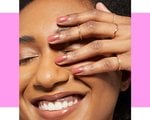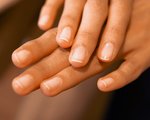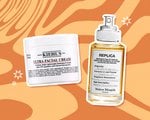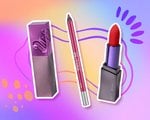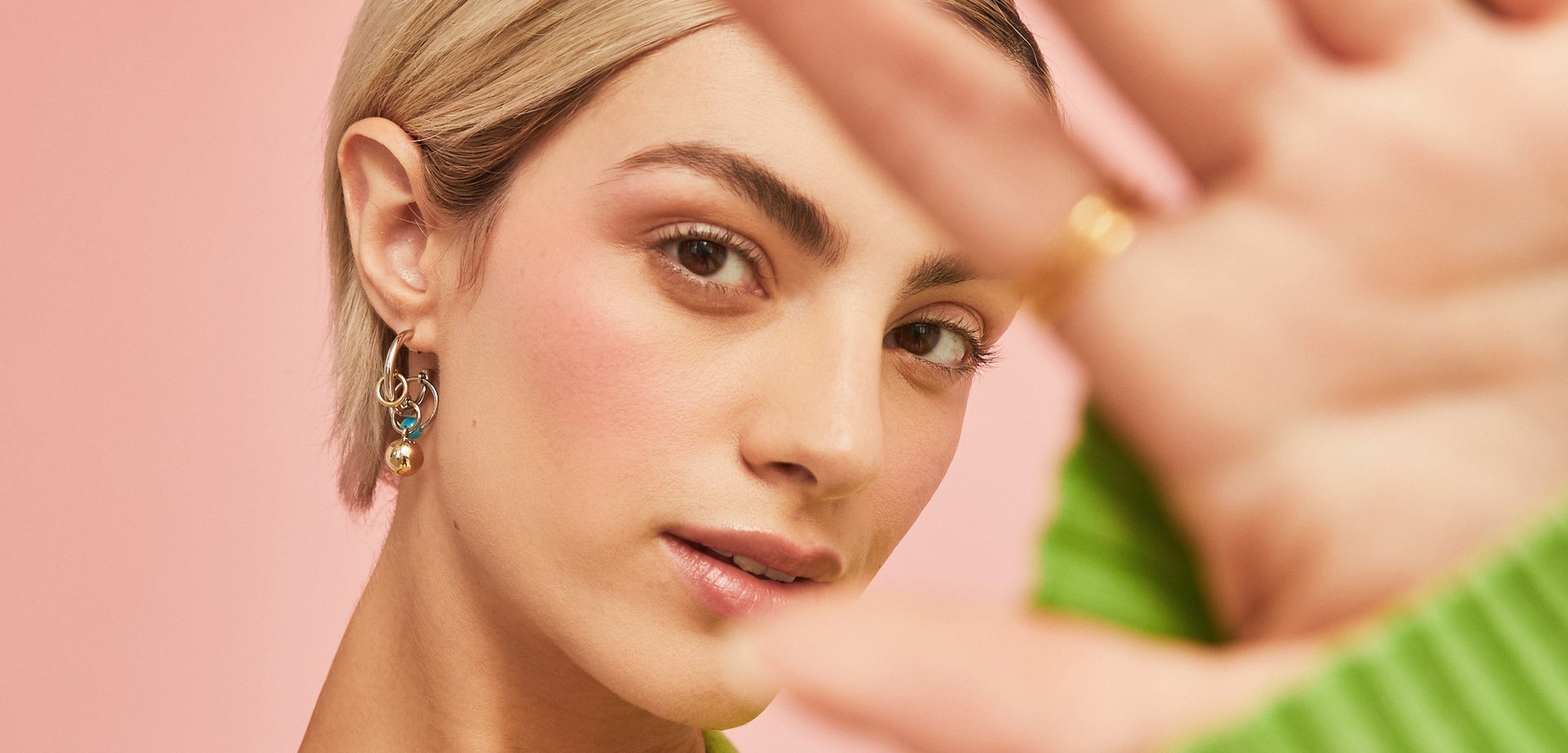Nails 101: Your Complete Guide to Manicure Types
November 23, 2022
French Manicures
For a manicure with a classy detail, you can’t go wrong with a French tip. It’s simple, timeless and even easy to do yourself, if you wanted to; we recommend using Essie Gel Couture in Chiffon the Move to try this look at home.
A French manicure — or a French tip — is one of the most common types of manicures. Popularized in ’70s Hollywood and extremely trendy in the ’90s, the look is characterized by white nail polish along the tip of your nail, with a light pink or nude base underneath. The look softly and subtly replicates your bare fingernails — just with a little bit more boldness.
These days, a French manicure can come in tons of variations. If you want to try something a little different from the classic white tip, opt for your favorite color on the tip of your nails instead.
Reverse French Manicures
For those French manicure minimalists who want to express a playful, quirkier side with their nails, this style is undoubtedly for you. If a French manicure involves nail polish painted on the tip of your finger, then the Reverse French manicure is, well, the reverse.
Instead of polish on the tip of your fingernail, this funky style incorporates a thin line of nail polish on the base of your fingernail, near the cuticle. Whether you have short or long nails, this look is super fun. Don’t be afraid to play with this style by varying the colors you use on your nails. You can recreate the soft yellow look below with the Essie Gel Couture Atelier at The Bay.
Gel Manicures
Unlike a basic mani, a gel manicure uses some extra equipment to achieve your desired nail look. After applying a gel polish of your choice, your nail tech will dry your nails under a UV or LED lamp to bond the polish to your nails, which makes the mani less prone to chipping.
Gel manicures look similar to basic manicures, though they tend to be more expensive, longer-lasting and a little glossier. They’re also ideal for nail art.
“A gel manicure starts with general nail prep, cuticle work, filing, a light buff and cleansing to remove any oil from the nail plate,” explains Melissa Samuel, a nail artist, salon owner and the founder of FinesseYourClaws.
After the nail is dehydrated with a bonder, a primer is painted on the nail to promote adhesion, says Samuel. Then, a base gel is painted on, followed by two coats of gel color and a top coat. In between coats, the nail is cured under a UV lamp. “Gel manicures last a lot longer than regular polish manicures, as each layer is cured to the nail with a LED/UV lamp,” notes Samuel. “The manicure will grow out with the natural nail and should be non-chip if sealed correctly.”
Structured Gel Manicures
“A structured gel manicure is where soft gel is used to build out the natural structure of the nail with a thicker foundation to provide strength and durability,” explains Samuel. “You have the option to refill the base at every appointment.”
Polygel Manicures
“Polygel nail extensions are a nail enhancement that is more flexible and lightweight compared to acrylic but is harder than regular gel or Gel-X nails,” Gina Alcedo, celebrity manicurist and founder of Nailvana L.A. previously told Makeup.com. “Polygel nails are great if you want long nails but have trouble growing your natural nails.”
The application process involves a nail technician molding a ball of polygel to your natural nail to create the desired shape and length and then curing it under a UV light.
Julie Kandalec, a celebrity manicurist in New York City, previously told Makeup.com that polygel nails can last up to four weeks when applied properly. Of course, to get this type of mani, you’ll want to visit a licensed nail technician.
American Manicures
You’ve likely heard of the French mani, but what exactly is the American manicure? As nail expert Deborah Lippman previously explained to Makeup.com, the American mani is a softer take on the French manicure, consisting of a sheer white or beige tip that’s blended into a base coat. With an American manicure, you’ll end up with nails that have an almost gradient-like effect; they’ll appear feathered-out and slightly translucent. For the white tip, we love Essie Marshmallow.
Dip Powder Manicures
As Samuel explains, dip powder manicures are usually created by painting a layer of gel glue on the nail, and then dipping the nail in an acrylic powder for strength. However, Samuel notes she’s not a fan of this technique. “Gel and acrylic are not compatible in this way, and the fusion of two very different substances leaves the nails rock hard,” she explains.
While some may think dip powder manicures strengthen the nail because the combo makes them less flexible, and therefore less likely to break, Samuel notes that this isn’t healthy for the nail plate. “There needs to be some agility in any manicure, as our own nails are flexible — any overlay should mimic this.”
There also may be some sanitary issues with how the powder is applied to the nails. “Dip powder is usually applied by dipping your finger into acrylic,” explains Samuel. “This is very unsanitary, as any nail infections or fungus can be passed from client to client if they are all using the same dipping pot.”
On top of that, Samuel says that dip powder manicures can be extremely difficult to remove, which can cause damage to the natural nail.
Shellac Manicures
According to Samuel, a shellac manicure is simply a type of gel manicure. “It’s just a brand of gel; it's a widely known term, as the brand put gel manicures on the map,” she notes. Patented by Creative Nail Design, shellac manicures are available at licensed salons, with nail polish colors spanning over 100 shades in different finishes.
Acrylic Manicures
You’ve seen them before: those gorgeous, long, ASMR-worthy, click-clacking nails. Whether a solid color or elaborately designed, acrylics are a fun way to add dimension and expression to your manicure.
“An acrylic manicure is very different to gel as you don't need a gel lamp to set the manicure,” says Samuel. “You mix acrylic powder with monomer liquid to create a paste-like substance. This can add length to your natural nails or be used as a natural overlay to strengthen your regular nails.”
So why get an acrylic over another mani on your salon menu? As Samuel explains, acrylics are more durable for longer length nail enhancements. They also lend themselves well to nail art. For example, Samuel says you can “add nail art variations to the powder — i.e. glitter to do encapsulated styles.” This helps reduce the amount of filling for the nails.
Press-On Manicures
Want the salon look without going to the salon? No problem — a press-on mani is just what you need. Press-on nails are just that — pre-polished or decorated faux nails that you can press onto your natural nails using nail glue or an adhesive placed on the back of the press-on nail. You can get as elaborate or simple with designs as you want with press-ons, as there are thousands of products available out there in every color, shape and length imaginable.
With press-on manicures, you don’t have to worry about your polish chipping, and they’re much more affordable than getting a gel or acrylic manicure at the salon. Applying press-ons is also relatively simple and requires very little prep. The pre-application process typically involves removing any polish from your natural nails, cutting and filing your natural nails, cleansing your nails with a wipe that comes with your press-on kit and filing the press-ons. After those tasks are complete, you can apply the press-ons to your natural nails. You’ll want to follow the detailed directions on your press-on mani set to ensure you get the best results.
The most pressing (get it?) issue press-ons present is the risk of one popping off, but most press-ons will stay secure on your nails for about a week. However, because many are reusable, you can conveniently pop them back on using nail glue.
To avoid damaging your natural nail, you should never pick or peel off your press-on nails without properly soaking them first or without following the specific brand’s removal instructions.










